Hearty Beef Stew Recipe: Soul-Warming Comfort in Every Spoonful
Crafting a hearty beef stew brings pure comfort on chilly evenings when warmth matters most.
Tender chunks of meat slowly simmer with robust vegetables in a rich, savory broth.
Generations of home cooks have perfected this classic dish through patient love and careful techniques.
Rustic and satisfying, each spoonful tells a story of traditional cooking passed down through kitchens.
Herbs and spices dance together, creating layers of deep flavor that warm your soul.
Pantry staples transform into a magical meal that feels like a culinary hug.
Nothing beats a bowl of this stew when hunger calls and memories of home come flooding back.
Hearty Beef Stew Insights
Ingredient Essentials For Beef Stew
For the Meat:For the Aromatics:For the Herbs and Seasonings:For the Liquid and Thickeners:For the Vegetables:For the Cooking Fat:Beef Stew Cooking Procedure
Step 1: Sizzle and Brown the Beef
Heat olive oil in a large pot or Dutch oven over medium heat. Drop in beef cubes and cook until they develop a rich, golden-brown crust on all sides.
Transfer the browned beef to a separate plate and set aside.
Step 2: Create a Flavor Foundation
In the same pot with those delicious beef drippings, toss in:Sauté the vegetables until they become soft and translucent.
Add minced garlic and cook for another minute, letting the aroma fill your kitchen.
Step 3: Build Robust Flavor Layers
Stir in a dollop of tomato paste, sprinkle fresh thyme and rosemary, and splash in Worcestershire sauce.
Let everything mingle and cook for two minutes, intensifying the taste profile.
Step 4: Combine and Simmer
Return the browned beef to the pot.
Pour in beef broth and add:Bring the mixture to a rolling boil, then reduce heat and let it gently simmer for 1.5 to 2 hours. The slow cooking will transform the beef into melt-in-your-mouth tenderness.
Step 5: Final Touch of Freshness
In the last 10 minutes of cooking, sprinkle in frozen peas. Taste and adjust seasonings as needed for perfect balance.
Step 6: Serve and Savor
Ladle the steaming, hearty beef stew into bowls and enjoy the comforting, rich flavors of this classic dish.
Helpful Notes On Beef Stew Preparation
Different Styles Of Beef Stew
Side Dishes To Pair With Beef Stew
Storing Beef Stew Correctly
FAQs
Chuck roast and bottom round are ideal because they’re tough, flavorful cuts that become tender when slow-cooked, breaking down their connective tissues for a melt-in-your-mouth texture.
Yes, you can! Brown the meat first, then transfer all ingredients to the slow cooker. Cook on low for 7-8 hours or on high for 4-5 hours until the beef is fork-tender.
Absolutely! Browning creates a rich, caramelized exterior that develops deep flavor through the Maillard reaction, adding complexity to your stew’s overall taste profile.
Print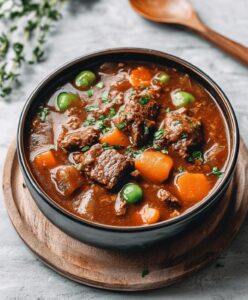
Beef Stew Recipe
- Total Time: 2 hours
- Yield: 6 1x
Description
Hearty beef stew brings comfort from Irish kitchens to dinner tables worldwide. Tender meat, root vegetables, and rich broth create a soul-warming meal you’ll savor with each delicious spoonful.
Ingredients
- 3 cups beef broth
- 2 lbs beef chuck, cut into 1-inch cubes
- 3 potatoes, peeled and cubed
- 3 carrots, sliced
- 3 celery stalks, chopped
- 1 cup frozen peas
- 1 onion, diced
- 2 tablespoons olive oil
- 2 tablespoons tomato paste
- 2 cloves garlic, minced
- 1 tablespoon Worcestershire sauce
- 1 teaspoon dried thyme
- 1 teaspoon rosemary
- Salt and pepper to taste
Instructions
- Warm olive oil in a robust cooking vessel over medium-high temperature, creating a golden sear on beef cubes until caramelized edges develop. Transfer meat to a separate plate.
- In the identical pot, gently transform onions, carrots, and celery into translucent, tender vegetables. Introduce minced garlic, allowing its aromatic essence to bloom for 60 seconds.
- Incorporate tomato paste, infusing the mixture with robust herbs like thyme and rosemary. Splash Worcestershire sauce to elevate the depth of flavor, letting ingredients meld for approximately 2 minutes.
- Reunite seared beef with vegetable foundation. Pour beef broth, nestle chopped potatoes into the liquid, and season with salt and pepper. Bring to a vigorous boil, then reduce to a gentle simmer for 1.5 hours, allowing meat to become fork-tender.
- During the final 10 minutes of cooking, scatter frozen peas throughout the stew. Taste and recalibrate seasoning if necessary, ensuring a perfectly balanced flavor profile.
- Ladle the rich, hearty stew into warm bowls, presenting a comforting meal that promises warmth and satisfaction.
Notes
- Opt for chuck roast or beef stew meat with good marbling to ensure tender, melt-in-your-mouth results.
- Pat beef dry before browning to achieve a perfect golden-brown crust that locks in rich flavor.
- Consider using low-sodium broth to control salt levels and prevent the stew from becoming too salty.
- Make this dish gluten-free by substituting regular flour with cornstarch or arrowroot powder for thickening.
- Prep Time: 20 minutes
- Cook Time: 1 hour 40 minutes
- Category: Lunch, Dinner
- Method: Simmering
- Cuisine: American
Nutrition
- Serving Size: 6
- Calories: 324 kcal
- Sugar: 4 g
- Sodium: 430 mg
- Fat: 15 g
- Saturated Fat: 5 g
- Unsaturated Fat: 9 g
- Trans Fat: 0.5 g
- Carbohydrates: 20 g
- Fiber: 4 g
- Protein: 28 g
- Cholesterol: 80 mg

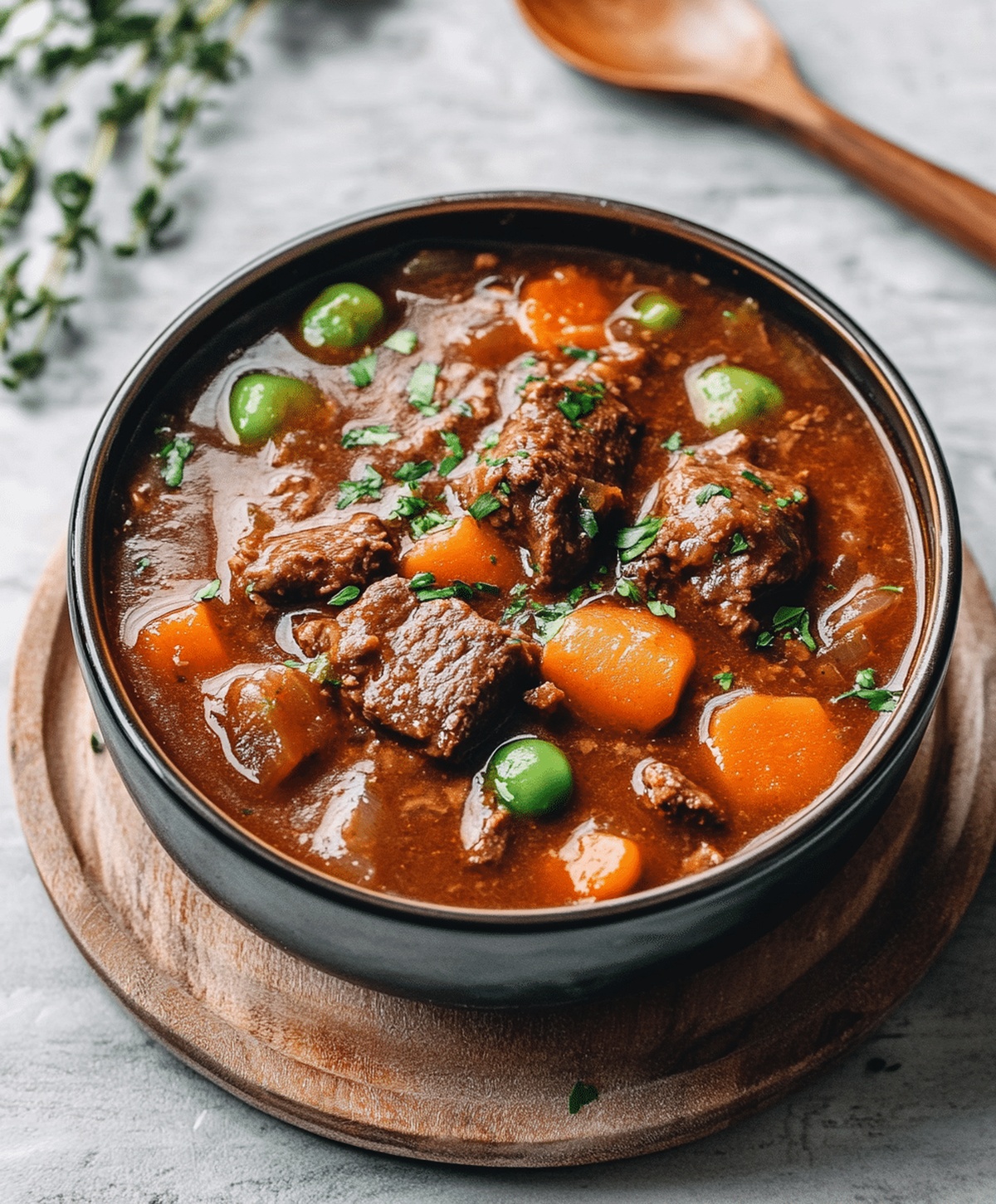
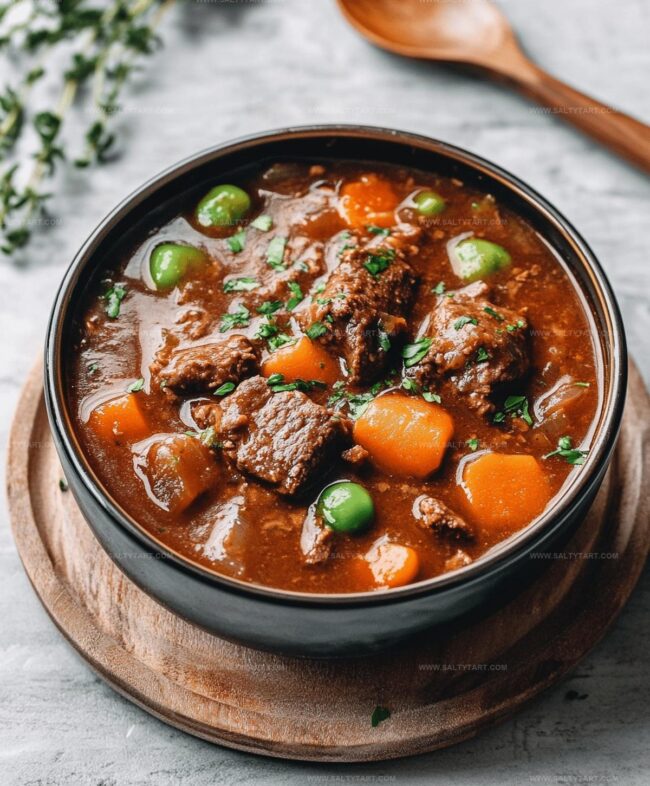
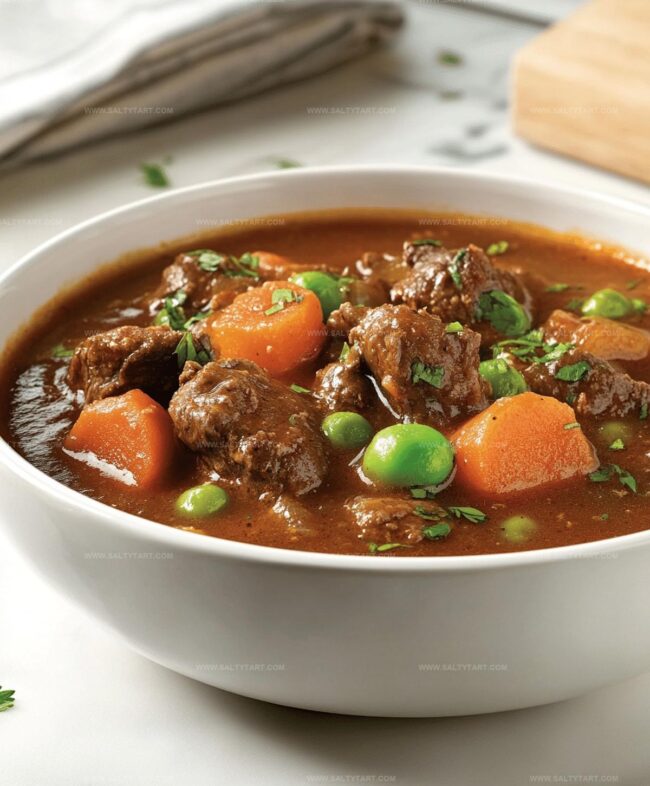
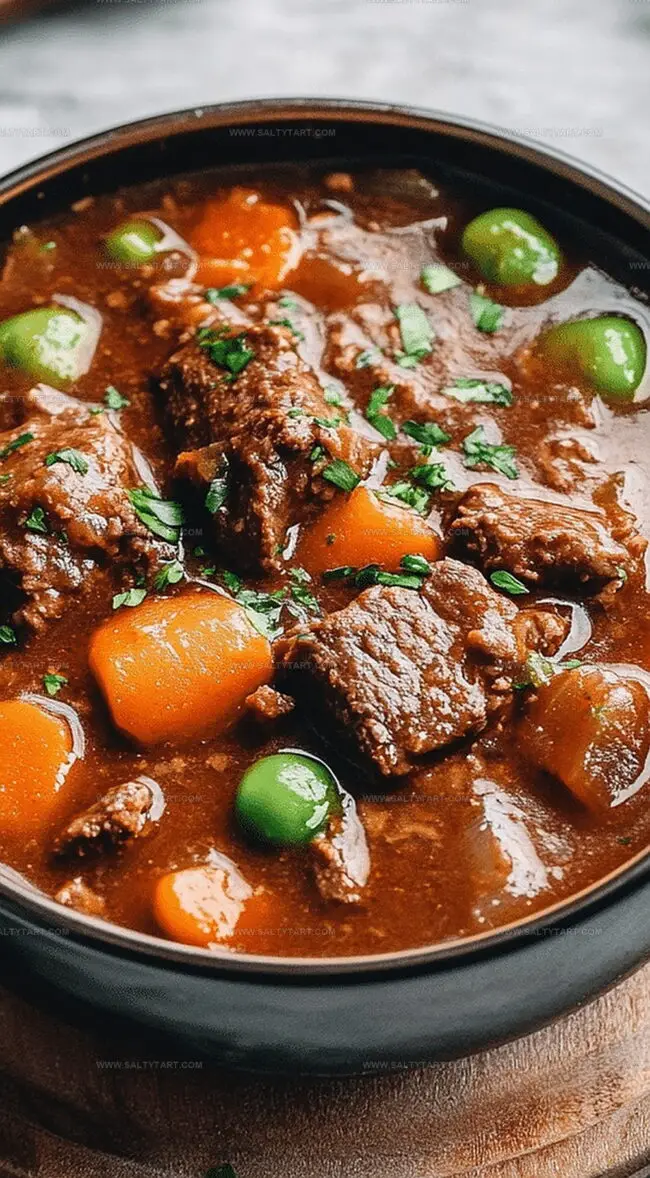

Jess Martinez
Contributing Recipe Writer & Nutrition Consultant
Expertise
Southwestern and Latin American cooking, Nutritional analysis and healthy recipe planning, Cultural food traditions, Modifying traditional dishes for better health
Education
Santa Fe Community College
Certificate in Culinary Arts
Focused on mastering the flavors and cooking methods of traditional Southwestern cuisine.
Jess’s love for bold, homegrown flavors led her straight into the world of Southwestern cooking and cultural nutrition.
After completing her Certificate in Culinary Arts at Santa Fe Community College, she made it her mission to show that good-for-you food can still taste incredible.
At saltytart.com, Jess shares vibrant, health-conscious recipes with roots in tradition but a fresh, modern twist. When she’s not testing new recipes, you’ll find her at local growers’ markets, tending her herb garden, or digging into food history books.